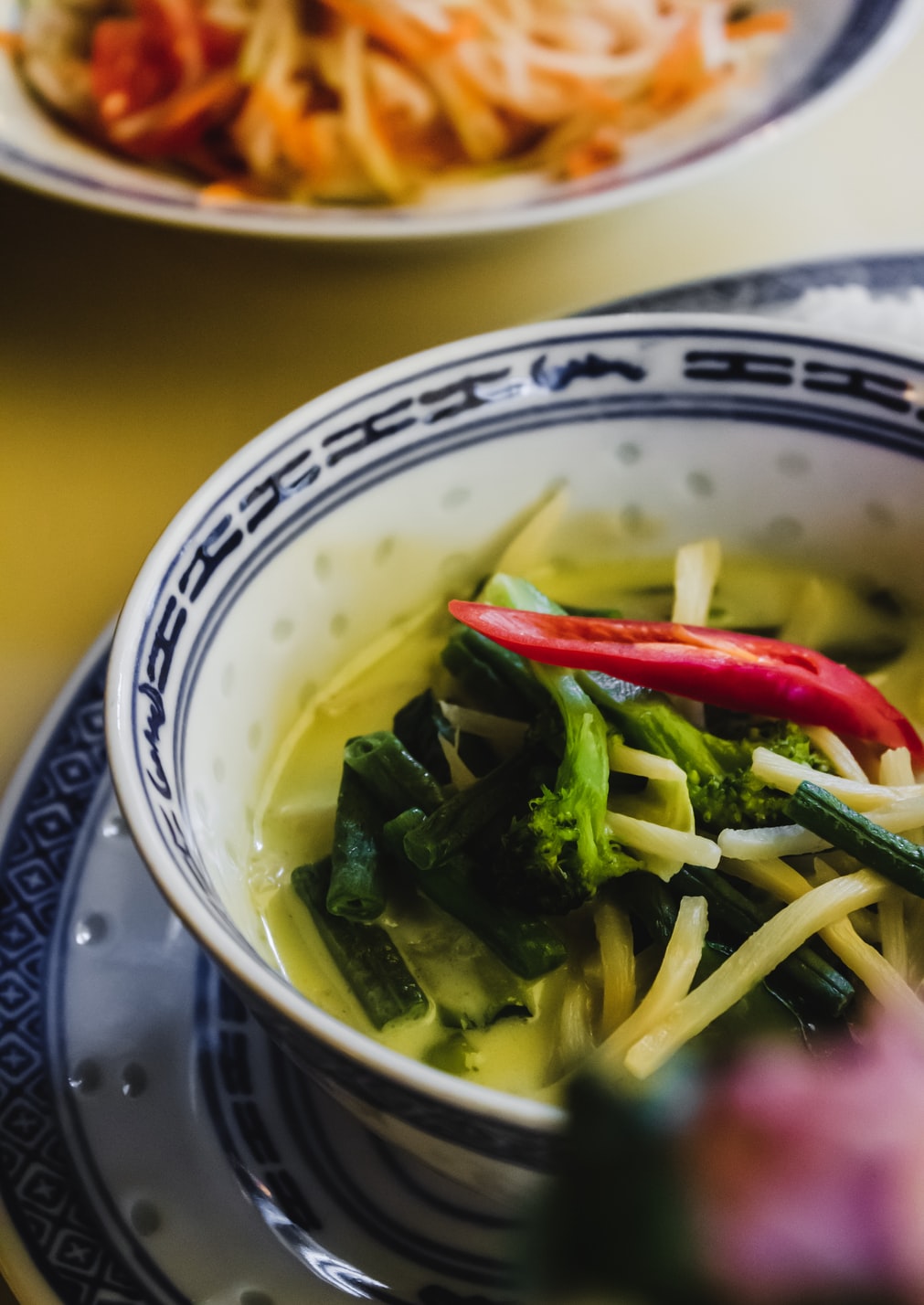
Capsicum Annuum
Chilli pepper
I love a spicy dish. A pinch of black pepper on a fried egg, or some red pepper in the curry: delicious! But don’t confuse one pepper for the other.
It’s odd, isn’t it, that we use the same word for two such different things – one a small, dark, mildly spicy grain and the other a long, bright red, very hot fruit that makes your nose run and your eyes water!
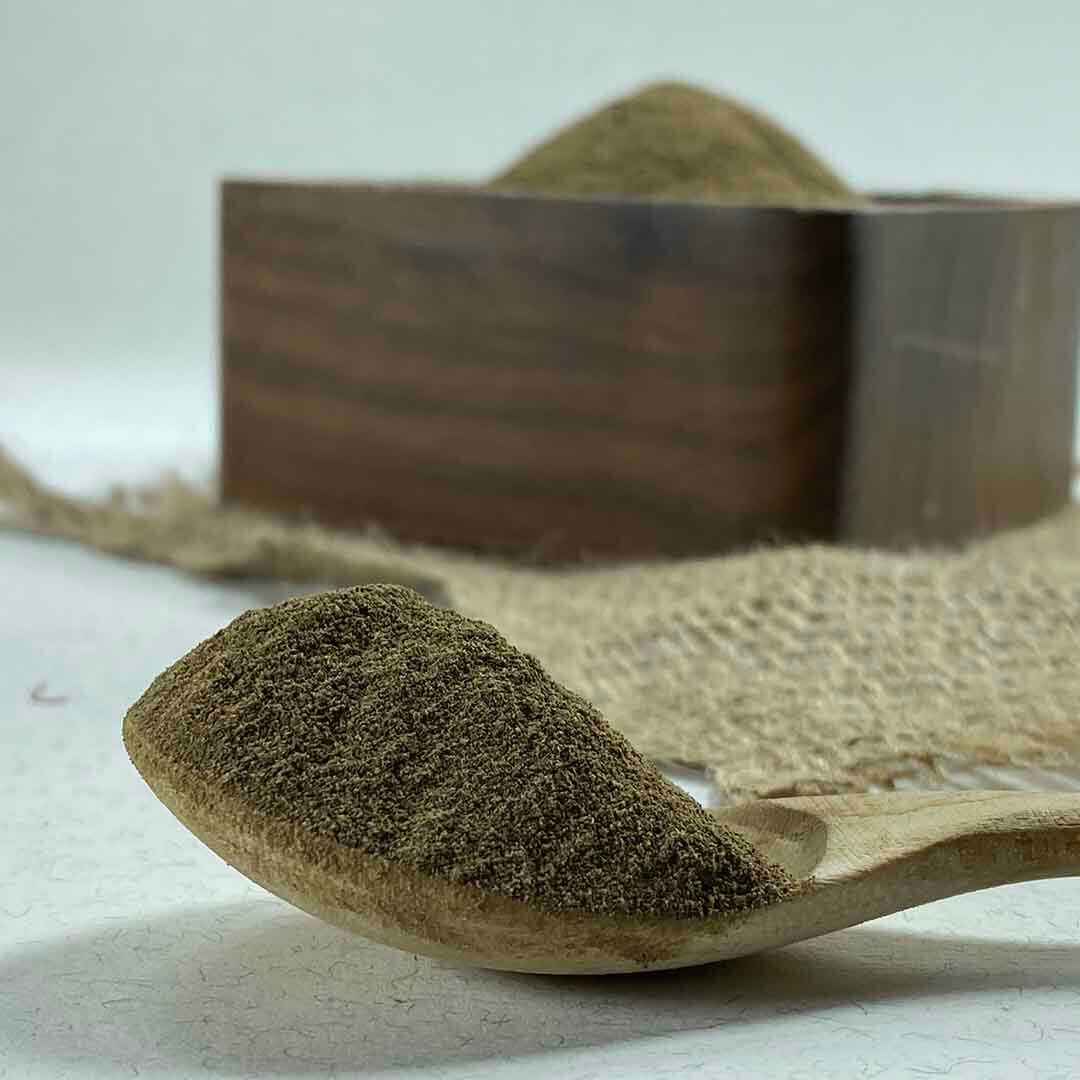
For a long time the word ‘pepper’ only meant the first seasoning, peppercorn. This had been known in Europe since Roman times and was imported from India.
The old Indian word for it was ‘pipparī’, a word that came from the Greek ‘peperi’ and the Latin ‘piper’. The English turned that into ‘pepper’, the French into ‘poivre’, and the Dutch into ‘peper’.
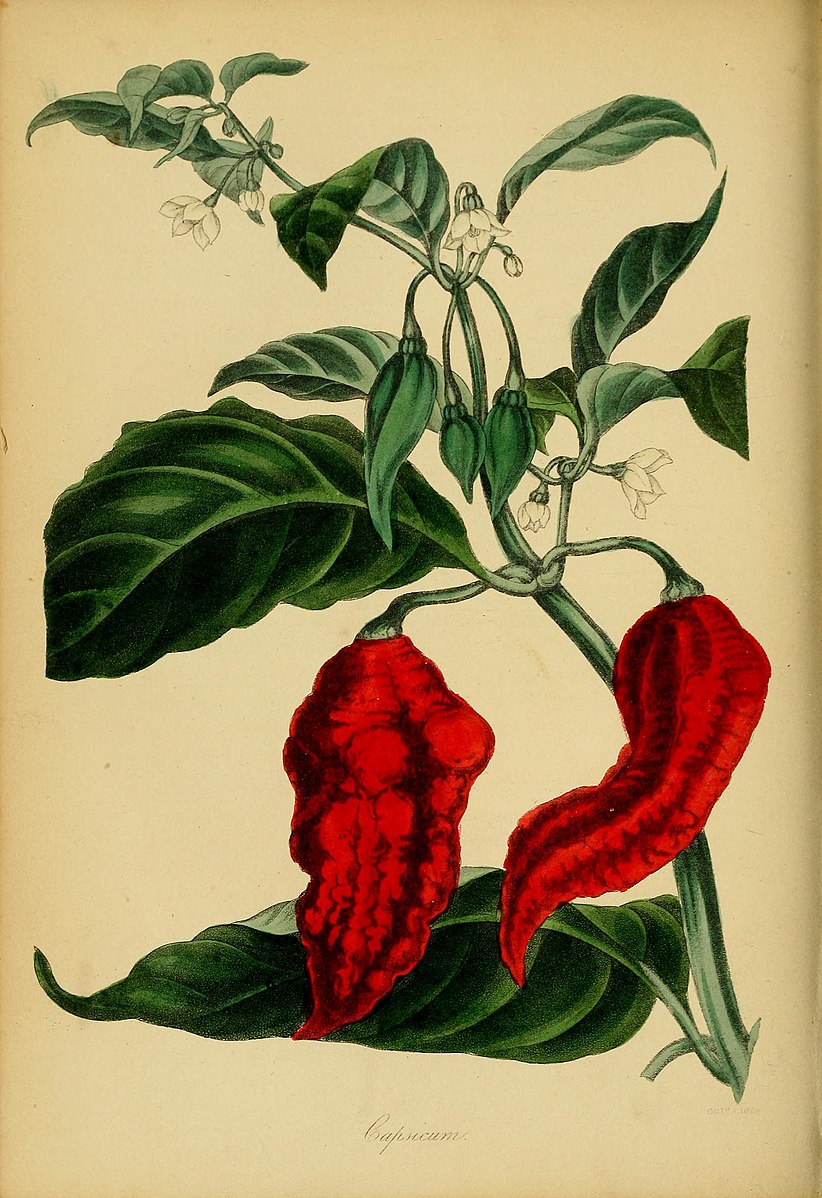
But the Dutch only discovered me, chili pepper, in the 16th century. They called me ‘Spaanse peper’, Spanish pepper. They probably called me pepper because I made a dish spicier, just like Indian pepper.
And ‘Spanish’? You’d think it was because I came from Spain, but that’s not it. I come from Central and South America, but I arrived in Europe through Spanish traders, so I came to be known as ‘Spanish pepper’.

Did you know that Christopher Columbus discovered me? The famous explorer was on an expedition to ‘seek India by way of the west’ in 1492, looking not only for new lands but also for black pepper,
an extremely valuable commodity at the time – they often called it the ‘new gold’. The Dutch word ‘peperduur’ (‘as expensive as pepper’) also goes back to these times.

But just as Columbus did not arrive in India but in South America, instead of black pepper he found red pepper, or – as the indigenous population called it, – ‘axí’ or ‘chile’, from which we get the name chili pepper.
Columbus wrote of this discovery in his logbook: ‘We found that the country produces much ‘axí’, a pepper that is more valuable and healthier than the common sort.’

Columbus called the local pepper variety ‘pimiento’ (which is now the Spanish collective name for all types of pepper), and a few years later the first seeds were shipped to Europe.

As a pepper variety I am one of the ‘Capsicum annuum’ species in the nightshade family. The word ‘capsicum’ may well come from the Greek word ‘kapto’, meaning ‘to eat hungrily’, no doubt referring to the strong taste of many fruits in my family.
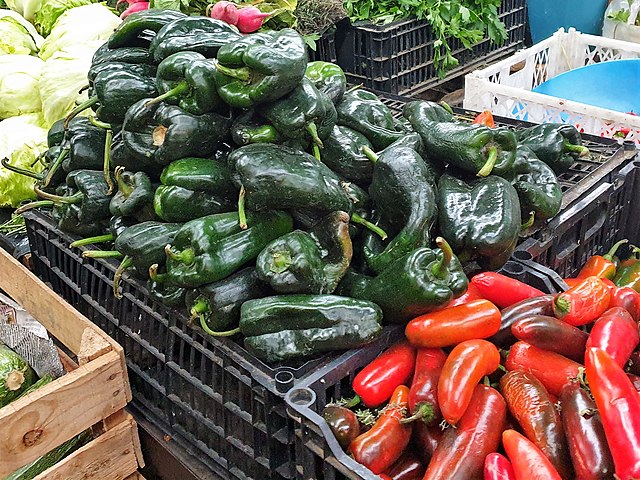
It’s also possible that the name is derived from the Latin word ‘capsa’, meaning box, referring to the shape of my ripe fruit.
The Latin word ‘annuum’ means annual, which is rather odd, because under favourable conditions I am definitely perennial.

The Capsicum-family includes not only my very hot brothers and sisters such as cayenne pepper, Madame Jeanette, and the ‘jalapeño’; it includes the bell pepper, which as far as hotness is concerned is a bit of a family joke.

We all know the feeling: you take a bite of a dish that’s a bit too spicy – and it feels like your mouth is on fire! The burning sensation is caused by capsaicin, a substance which fools pain receptors in your mouth into telling your brain that they are burning, even though there is of course no fire.

In 1912, the American pharmacist Wilbur Scoville (1865-1942) developed a scale for measuring the hotness of peppers. And get this: he did it by testing them himself.
He would grind up a piece of dried pepper and allow it to soak in pure alcohol overnight. He then gradually added the alcohol solution to sugared water, tasting all the time,
until he could feel ‘a weak, but clear prickling’ on his tongue. So he was effectively measuring how much the pepper had to be diluted before it could no longer be tasted.

Using this technique he invented the ‘Scoville scale’ which today goes from 0 (the ‘heat’ of a bell pepper) to 16,000,000 (pure capsaicin). Although the Scoville scale is still in use, no taste tests need to be carried out by humans:
today the concentration of capsaicin and related substances can be measured by laboratory machines.
The hottest pepper in the world so far is the Carolina Reaper. This red monster has a rating of 1,569,300 on the Scoville scale – at least 1500 times as hot as me. Ai, ai, ai!

In Italy they believe that I bring good luck. A bunch of corno rosso (red pepper) will help to avert ‘il malocchio’ (the evil eye). After all, you never know when someone might cast a curse on you.
But how did this superstition come about? In his ‘Metamorphoses’ the Roman poet Ovid described the use of blood coral as a protection against evil, and Romans started to wear blood coral amulets, a tradition that continued for many generations.
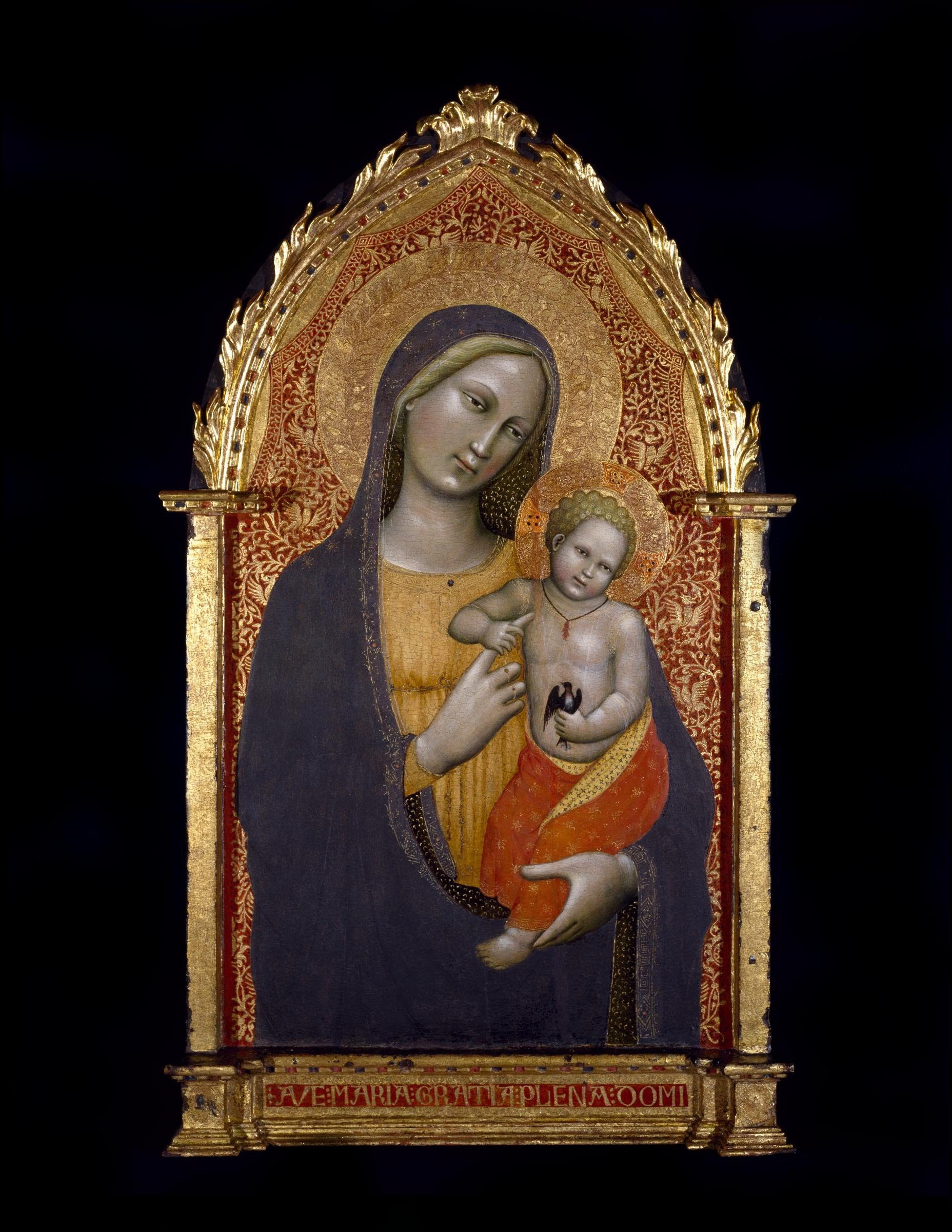
You can see these kinds of amulets in Renaissance paintings, too. If you’re ever looking at a 14th or 15th-century painting or altarpiece, look closely at the Christ-child: he’s often wearing a little red horn around his neck.

When the first chili peppers were imported into Italy, the locals immediately saw a similarity between their little red horns and this new fruit, and the amulets started to change shape, gradually taking on the form of a chili pepper.
They were held to protect against infidelity, improve your luck in gambling, and help you invoke the weather gods. Today, you need never fear a road accident if you hang a plastic ‘corno portafortuna’ from your rear-view mirror.

I’m a temperamental chico. Eat me, and your blood pressure and heart rate go up. It’s not harmful, though – in fact, I can be very good for you. The capsaicin I contain – the same stuff that gives me a hot taste – can be a very healthy substance.
For instance, I am often given to people with pain caused by overstimulated nerves in the skin; a capsaicin plaster on the skin binds capsaicin to the overstimulated nerve cells and they become less sensitive to pain.
I’m sometimes used to help people with chronic nasal complaints, such as a blocked or dripping nose. And it’s said that I can be good for losing weight, because eating me makes the body better able to burn fats.
We can’t be sure that’s true. You’d have to eat about half a kilo of chili peppers a day before you could expect to see any effect on your body weight – and that’s a lot, even for a serious chili pepper lover.
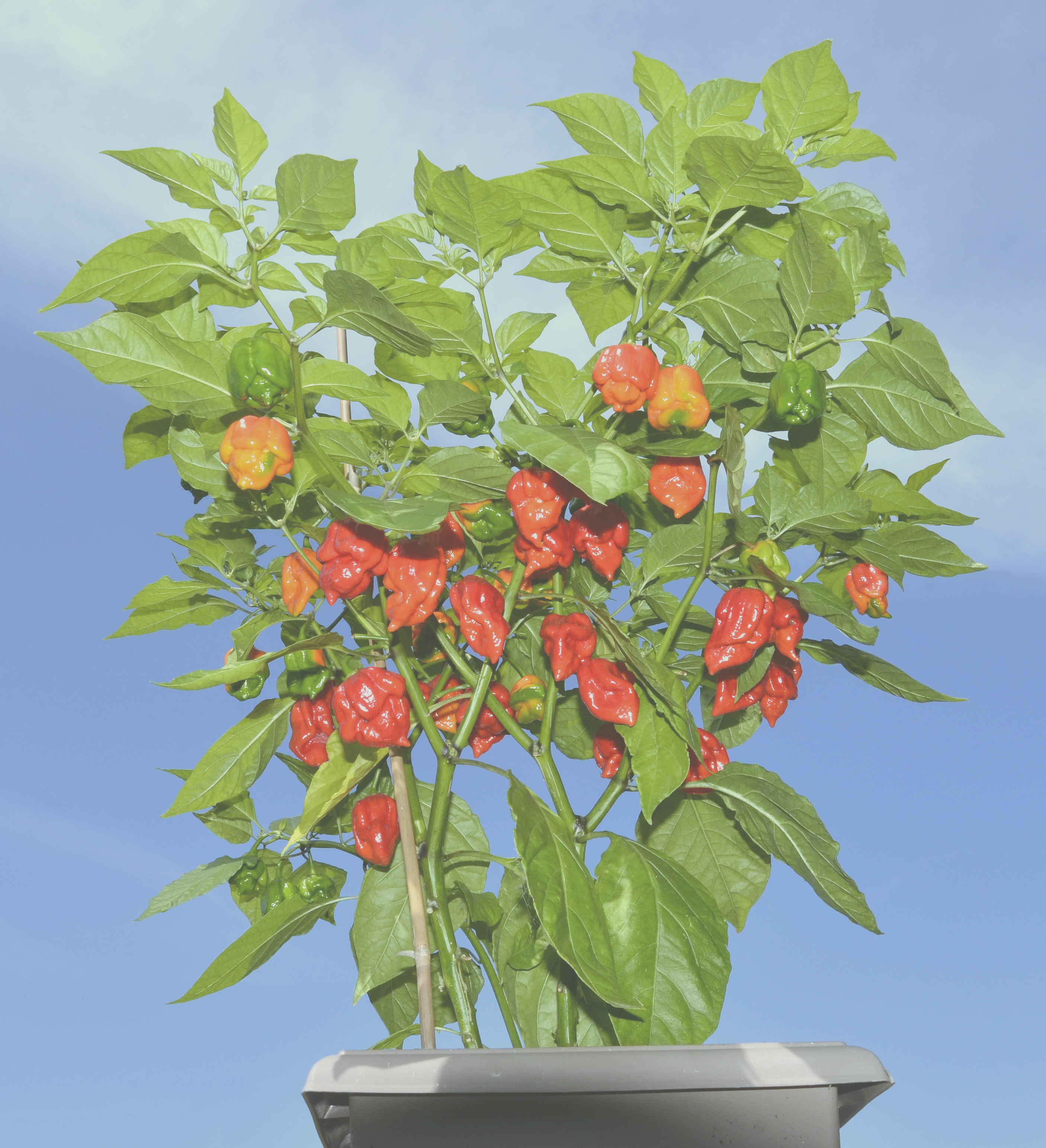
You do have to watch out with a few members of my pepper family, though. After an American man had taken part in a hot pepper eating competition and had eaten a whole Carolina Reaper, the hottest pepper in the world, he had dry heaves and excruciating neck pain,
followed a few days later by ‘thunderclap headaches’, sudden and severe episodes of intense pain. He was rushed to hospital, where they found that arteries in his brain arteries had constricted.
The man was the first ever person to be given this diagnosis after eating a pepper. He eventually recovered, but it was a close thing. ¡Dios mío!

How many fruits can say that a world-famous rock band shares their name? I can, for one! In the early ’80s, four Los Angeles high school students formed a band and called it Tony Flow and the Miraculously Majestic Masters of Mayhem.
Right, a ridiculously long name that no-one could remember. They needed a new name, and because they all loved jazz, they decided that it had to have something to do with jazz.

The trumpeter Louis Armstrong had had a band called Hot Five, and in the ’20s there had been a jazz band in Chicago called the Red Hot Peppers.
Damn! There it was: the Red Hot Chili Peppers. The boys thought it went perfectly with their music, a combination of spicy funk and flaming guitar. The name was so well chosen, in fact, that today, forty years on, the band is still hot. Rock on!


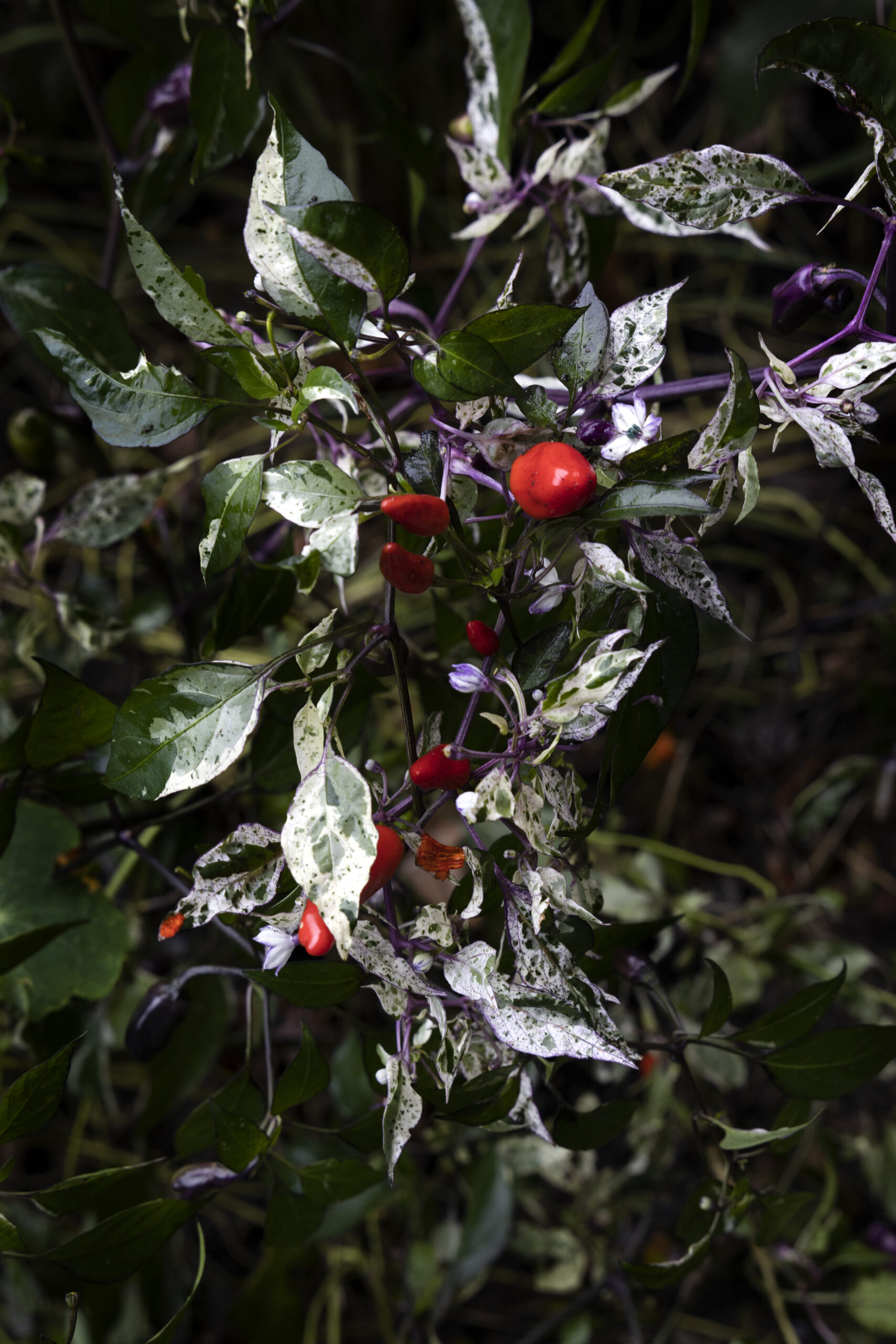
Hi, my name is Chili pepper. Do you want to know where my name comes from?
ELSPETH DIEDERIX
CAPSICUM ANNUUM (SPAANSE PEPER)
Chili pepper
name
Capsicum annuum
Height
50-70 cm
Flowering time
May-June
Family
Solanaceae

name
Capsicum annuum
Height
50-70 cm
Flowering time
May-June
Family
Solanaceae












